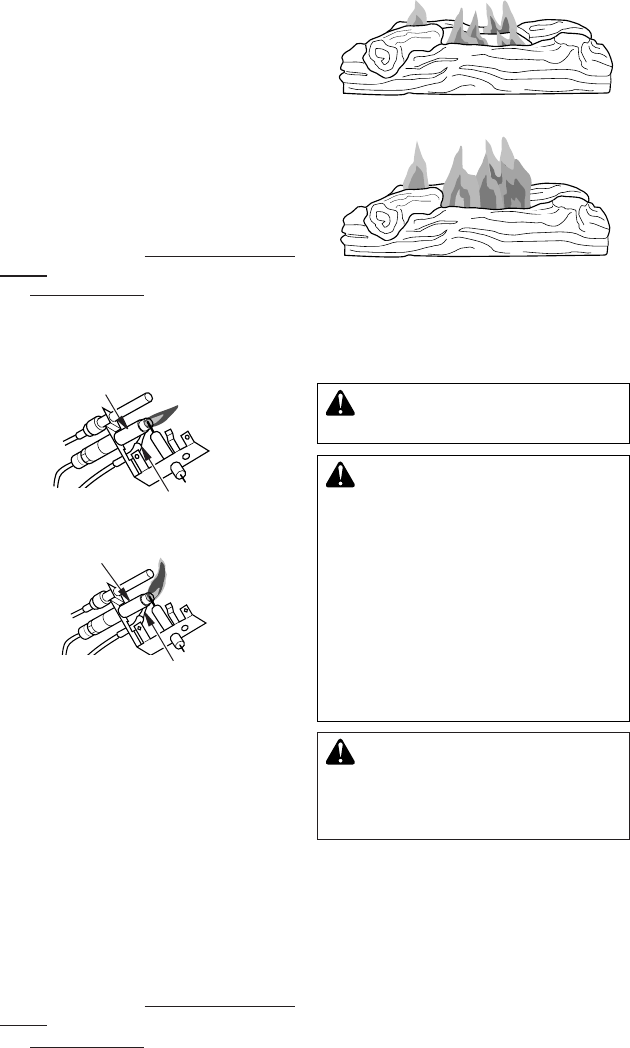
www.fmiproducts.com
124979-01C20
INSPECTING BURNERS
Check pilot ame pattern and burner ame
patterns often.
Figure 29 shows a correct pilot ame pattern.
Figure 30 shows an incorrect pilot ame pat-
tern. The incorrect pilot ame is not touching
the thermocouple. This will cause the thermo-
couple to cool. When the thermocouple cools,
the replace will shut down.
If pilot ame pattern is incorrect, as shown
in Figure 30
•
turn replace off (see To Turn Off Gas to Ap-
pliance, page 19.
• see Troubleshooting, page 22.
Note: The pilot ame on natural gas units will
have a slight curve, but ame should be blue
and have no yellow or orange color.
Figure 29 - Correct Pilot Flame Pattern
(Propane/LP Remote-Ready Shown)
Pilot Burner
Thermocouple
Figure 30 - Incorrect Pilot Flame Pattern
(Propane/LP Remote-Ready Shown)
Pilot Burner
Thermocouple
Figure 31 shows a correct burner ame pat-
tern. Figure 32 shows an incorrect burner
ame pattern. The incorrect burner ame
pattern shows sporadic, irregular ame tip-
ping. The ame should not be dark or have
an orange/reddish tinge.
Note: When using the replace the rst time,
the ame will be orange for approximately one
hour until the log cures.
If burner ame pattern is incorrect, as shown
in Figure 32
•
turn replace off (see To Turn Off Gas to Ap-
pliance, page 19.
• see Troubleshooting, page 22.
Figure 31 - Correct Burner Flame Pattern
Figure 32 - Incorrect Burner Flame
Pattern
CLEANING AND
MAINTENANCE
CAUTION: You must keep
control areas, burner and cir-
WARNING: Failure to keep
BURNER ORIFICE HOLDER AND
The primary air inlet holes allow the proper
amount of air to mix with the gas. This pro-
vides a clean burning flame. Keep these
holes clear of dust, dirt, lint and pet hair.
Clean these air inlet holes prior to each
heating season. Blocked air holes will create
soot. We recommend that you clean the unit
every three months during operation and
have replace inspected yearly by a qualied
service person.


















